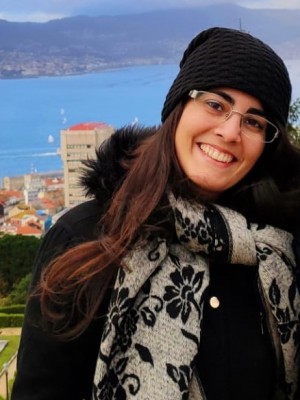resumo
The high demand for greener energy and technological innovation require some crucial elements, such as the rare earths Nd and Dy. Being considered two of the most critical elements (high supply risk), it is vital to recover them from wastes/wastewaters, for later reuse. Here, the influence of operational parameters, such as biosorbent stock density (0.5, 3.0, and 5.5 g L-1), ionic strength (salinity 10 and 30) and contact time (24, 72 and 168 h), in the biosorption/bioaccumulation of Nd and Dy by two living marine macroalgae was evaluated in artificial seawater, seeking the improvement of the process. Results demonstrated that stock density is the most influential parameter, while the ionic strength showed to be a selective parameter, with a major influence only for Dy removal, which can be attributed to the different chemical characteristics observed between light rare earth elements (LREE) and heavy rare earth elements (HREE). For the ranges studied, the greatest removal/recovery for Gracilaria sp. was achieved with a stock density of 3.0 g L-1 at salinity 10, after 72 h for both REEs. For Ulva lactuca optimal conditions were: stock density of 5.5 g L-1 at salinity 10 with a contact time of 72 h for both REEs. Between species, U. lactuca showed to be the most promising, with removal efficiencies up to 98% for Nd and 89% for Dy. Findings substantiate the potential of the proposed process for obtaining Nd and Dy from secondary sources, particularly from low-level contaminated waters. (C) 2021 Elsevier Ltd. All rights reserved.
palavras-chave
RARE-EARTH-ELEMENTS; AQUEOUS GEOCHEMISTRY; SIMULTANEOUS REMOVAL; CONTAMINATED WATERS; FRESH-WATER; BIOSORPTION; BIOACCUMULATION; BIOTECHNOLOGY; ADSORPTION; SPECIATION
categoria
Environmental Sciences
autores
Viana, T; Henriques, B; Ferreira, N; Lopes, C; Tavares, D; Fabre, E; Carvalho, L; Pinheiro-Torres, J; Pereira, E
nossos autores
agradecimentos
This research was funded by Fundacao para a Ciencia e a Tecnologia (FCT), I.P. and Ministerio da Educacao (MEC) through national funds, and co-funded by the FEDER, within the PT2020 Partnership Agreement and Compete 2020, by the financial support to REQUIMTE and CIIMAR (UIDB/50006/2020, and UID/Multi/04423/2019, respectively). Bruno Henriques acknowledges FCT for the research contract (CEECIND/03511/2018) under the CEEC Individual 2018, while Claudia B. Lopes acknowledges her research position funded by national funds (OE), through FCT - Fundacao para a Ciencia e a Tecnologia, I.P., in the scope of the framework contract foreseen in the numbers 4, 5 and 6 of the article 23, of the Decree-Law 57/2016, of August 29, changed by Law 57/2017, of July 19. This work has also been supported by the project No 46998_N9ve-REE co-funded by Portugal (2020) program (PT 2020), PO Centro, and European Regional Development Funds.


